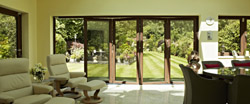Boiler breakdowns happen, but don’t let them cost you
A five-star hotel or a luxury gym and spa losing its hot water, or the local primary school or district hospital losing heating for the vulnerable isn’t a scenario anyone wants to envision. Boiler breakdowns happen, but don’t let them cost you business, your customers’ happiness or your reputation.
Mitigate downtime with a temporary boiler
Mitigate the downtime of a boiler breakdown by implementing a schedule to include an annual check. By preparing in advance, a temporary boiler can be hired for the duration with a cross-over of time to allow for any repairs to problems which may be identified during the check – meaning that you can keep on delivering an uninterrupted service.
Additionally, an annual check will ensure that your boiler is kept in optimal condition, highlighting any potential problems and allowing for the schedule of repairs before disaster strikes. Planning the check in advance, along with the temporary hire of a boiler, allows time for any issues to be dealt with without the downtime, reducing overall stress and costs.
Having a boiler schedule between the maintenance team which runs throughout the year will not only ensure that the boiler is regularly and routinely checked, but that individual parts and elements are also focused on which will only help to capture early warning signs of potential issues.
Get your temporary needs covered
It’s important when hiring a boiler to get the right size and type for your needs. Staff at Ideal Heat appreciate that no two building’s needs are the same and we will advise on the perfect package. With sizes ranging from a 22kW electric boiler up to 1MW gas or oil boilers, the company has something to suit any need. To view the full range of temporary boilers, click here. If Ideal Heat does not stock it, the company will make it with its bespoke services and take care of the installation.
Using state-of-the-art technology, Ideal Heat can identify problems before they’re evident on site and will fix them remotely, meaning that you can rest assured that your temporary boiler needs are being looked after. Additionally, if you need adjustments to your hot water or heating temperature during the hire, then a few simple clicks and it’s done.
Don’t leave yourself unprepared. A planned annual boiler check could save you a major headache, money, disruption to your services and help keep your reputation in check.
 It goes without saying that bi-folds create a wow factor – when open, they completely transform the space, bringing the outdoors in. We recommend bi-folding doors for a size up to four metres; within this measurement, bifolds look much more impressive than sliding doors. A greater clear opening can also be achieved, creating more sociability between your indoor space and garden.
It goes without saying that bi-folds create a wow factor – when open, they completely transform the space, bringing the outdoors in. We recommend bi-folding doors for a size up to four metres; within this measurement, bifolds look much more impressive than sliding doors. A greater clear opening can also be achieved, creating more sociability between your indoor space and garden. A more traditional option, sliding doors may be the perfect choice for you. They tend to look better when they’re closed, as the large panels of glass welcome light into the home without being broken up by framework. For installations over the four metre mark, they are the ultimate choice; the wider the door, the wider the clear opening.
A more traditional option, sliding doors may be the perfect choice for you. They tend to look better when they’re closed, as the large panels of glass welcome light into the home without being broken up by framework. For installations over the four metre mark, they are the ultimate choice; the wider the door, the wider the clear opening.
 Fit Bi-folding Doors
Fit Bi-folding Doors Add Colour:
Add Colour:

 Applications and retentions
Applications and retentions Should we trust the protection of our vacant premises with technology or will those quick witted criminals best be kept at bay with a team of trained security guards?
Should we trust the protection of our vacant premises with technology or will those quick witted criminals best be kept at bay with a team of trained security guards? Technological solutions tend to cost more upfront but over time will become far more cost effective than guards. These solutions work 24/7 and can include door and window alarms, dedicated
Technological solutions tend to cost more upfront but over time will become far more cost effective than guards. These solutions work 24/7 and can include door and window alarms, dedicated 
